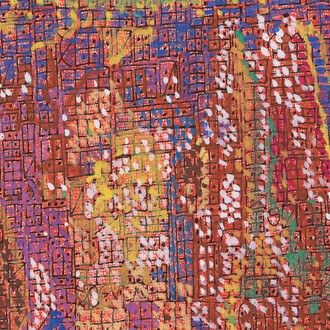Curated by independent curator Douglas Fogle in close collaboration with the artist, the exhibition emerges as a direct response to the histories of figuration that Dumas explored within the archaeological collections of the Museum of Cycladic Art. For this exhibition, Dumas has personally selected works from across her oeuvre, while, in a rare gesture, she has also hand-picked a group of fourteen archaeological artefacts from the Museum’s collection to be presented alongside her own works.
Born in South Africa in 1953 during the years of Apartheid, but having lived and worked in Amsterdam for nearly five decades, Marlene Dumas has spent her career using the practice of painting to explore deeply human states of being, ranging from violence, mourning, and melancholy to joy and tenderness. She has repeatedly done this by taking the human body as her subject in exhibitions at museums across the world such as Palazzo Grassi in Venice (2022), the Musée d’Orsay in Paris (2021), Tate Modern in London (2015), the Stedelijk Museum in Amsterdam (2014), and the Museum of Modern Art in New York (2008).
The exhibition brings together more than forty paintings and works on paper spanning over three decades, offering a representative view of Dumas’s strangely beautiful and provocative representations of the human form. Among them are two new monumental paintings: Old (2025) and Phantom age (2025), created especially for this exhibition at the Museum of Cycladic Art.
Dumas’s paintings are shown in conversation with fourteen antiquities from the Museum’s collections, ranging from schematic figurines of the Late Neolithic period and stylized marble figurines of the Cycladic Bronze Age to sculptural works from the Classical period, spanning regions from the Aegean to Cyprus. These artefacts have either directly inspired or resonate with Dumas’s works on view, highlighting enduring and universal themes such as life, love, motherhood, gender, and mortality. This rare pairing invites visitors to reflect on both the timelessness and immediacy created by the coexistence of Dumas’s works with creations from the past.
















